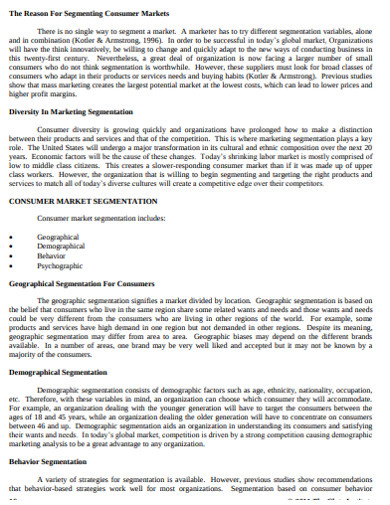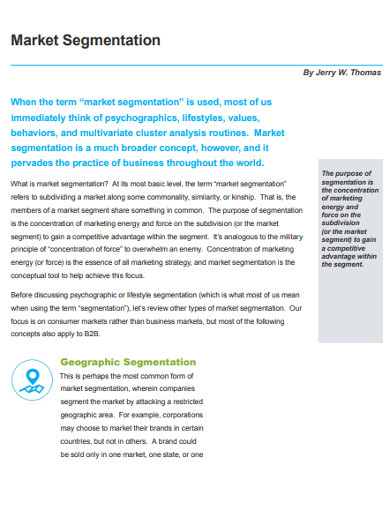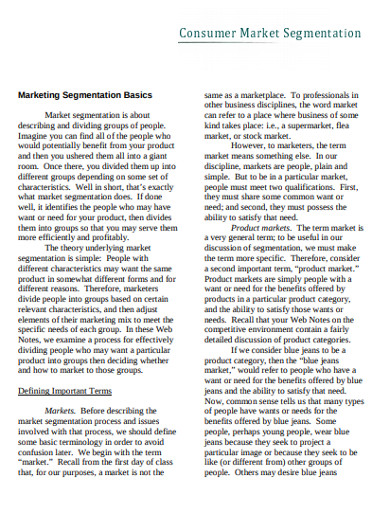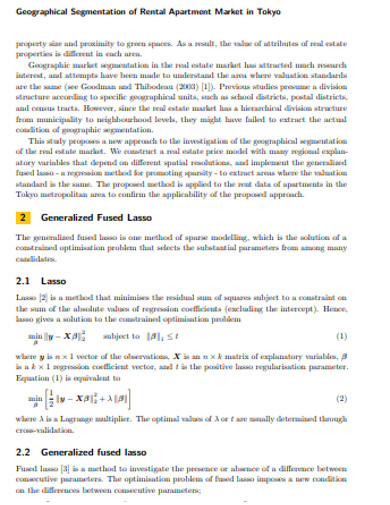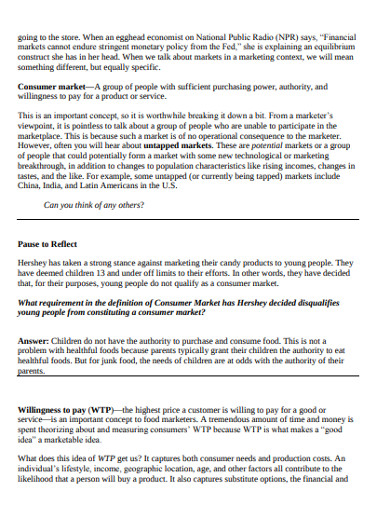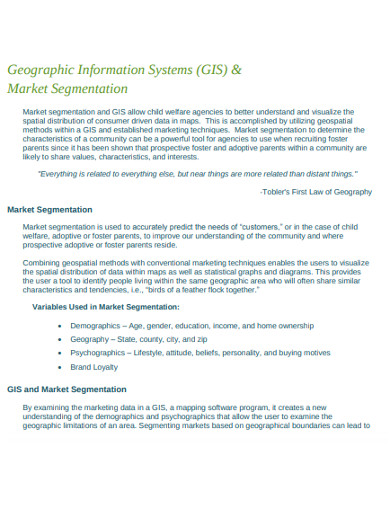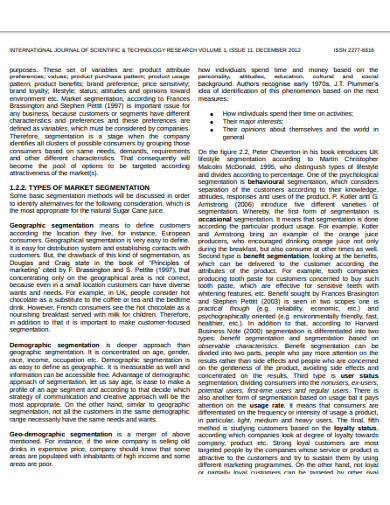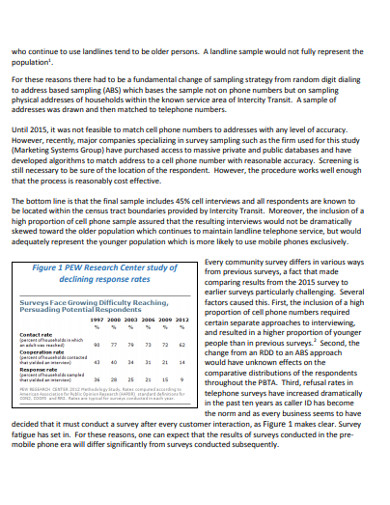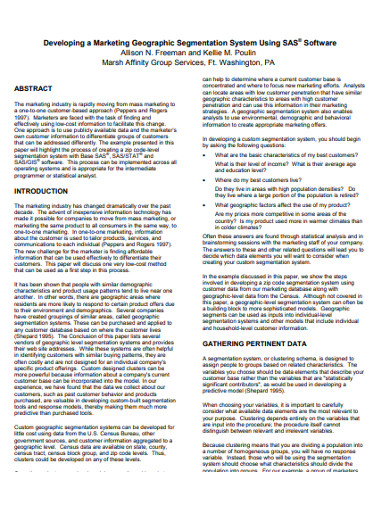9+ Geographical Market Segmentation Examples to Download
While thick faux fur coats would not sell as much in equatorial regions as they would in temperate countries, there are geography-based differences that aren’t as obvious. That doesn’t make them any less influential in the success of your business venture. Geographical market segmentation lets you use your resources smarter by indicating the more promising points of business.
Because people from different places are likely to have different preferences, dividing the market on a geographical basis is a more reliable predictor of consumer interest than demographic market segmentation. Instead of generalizing customers’ wants and needs by age or sex, you would classify their preferences based on the city, culture, and climate. Studying the geographical implications of your business will help you create personalized marketing messages that resonate with your target market.
Landscaping the Market
Geography is a study of Earth, its origins, characteristics, and the phenomena that concern the planet. This scope includes the inhabitants of the world and the relationships we have with the environment. It intersected with the economy since, fundamentally, Earth’s landscape has direct and indirect consequences on the world’s market and history. To gain a concrete grasp on this, we can go back to more than 2,000 years ago.
Intersection Of Civilization
The Silk Road was a network of routes that grew over the centuries, connecting the ancient world from west to east. Before, sea travel wasn’t the best way to transport goods and people. The road was a safe and convenient passageway for people, and even rogue armies protected the area. Even at the height of raids and wars, merchants using the road were protected in exchange for tariffs. This thread of routes helped trade and commerce flourished even as empires and dynasties crumbled. The long stretch of road was a venue for trade and the communal exchange of ideas, culture, traditions, and innovations.
World Market Chokepoint
Centuries after the collapse of the Silk Road, another key player in the international market rose. The Strait of Hormuz is a narrow channel linking the Persian Gulf and the Arabian Sea. At at least 21 miles wide, the strait has been the cause of unrest in the region and holds the world economy by the neck. The Middle East supplies more than 30 percent of the world’s oil transported across the sea, and that highly valued commodity passes by this stretch of water. Since there is no easier way to transport oil out of the region, whoever controls the strait, in some sense, controls the world.
Geographic Segmentation Benefits
An advantage of using this form of market segmentation is that your company can target consumers by having a better predictor of their preferences as given away by their locations. When you understand the nature of consumers and their preferences in a location, you can create ads and products tailored to what the customers want.
Because you understood the wants and needs of your desired clientele, you can cut back on other strategies meant for a wider scale and less target-specific marketing. By using geographical market segmentation in your marketing strategy, your customers will feel valued because you care about them and what they like. There is no one size fits all, not even in marketing.
As mentioned, the geographic division is a better predictor of what your consumers would expect from you. Data gathered from this type of market segmentation are more objective, in the sense that it doesn’t try to claim that all women want babies by age 28. When it is winter season in an area, you can be fairly certain that all the people there feel cold. It is also easier to determine the region where a person resides.
9+ Geographical Market Segmentation Examples
The following are examples of geographical market segmentation that you should check out.
1. Geographical Digital Market Segmentation Example
2. Sample Geographical Marketing Segmentation Example
3. Basic Geographic Market Segmentation Example
4. Geographic Consumer Market Segmentation Example
5. Geographical Segmentation of Rental Apartment Market Example
6. Simple Geographic Market Segmentation Example
7. Geographic Market Information Systems Segmentation Example
8. Geographic Product Market Segmentation Example
9. Geographic market Segmentation Final Report Example
10. Geographic Marketing Developing Segmentation Example
Learning By Example
There are several companies that integrated geographical market segmentation into their advertising and marketing arsenal. Read on the following geographic factors for market segmentation and learn how you can emulate the following companies’ success or avoid the pitfalls that they have fallen victim of.
1. Location
Coca-Cola sells happiness in a bottle. Being a globally-recognized company, it understands that happiness manifests differently for different places and cultures. For instance, in the US, the company’s advertisements can be about individuality. In the Philippines, the ads are about family and companionship, which the country has a high regard of. The company takes into consideration what a group of people value, and speaks to these people in their love language.
2. Linguistics
Sometimes, the literal language can be the problem. You can have a solid marketing message but when you fail to consider how it would translate to the locals, you will have a blunder not unlike that of the automaker Ford. When Ford brought in their car model Pinto in Brazil, sales weren’t as good as hoped. Not when the car model’s name is small male genitalia in the local tongue. Therefore, companies should conduct market research first about the place where they hope to expand in.
3. Culture
Out of respect for the local culture or the norm of that society, fast-food giant McDonalds offer different products in different parts of the globe. In India, the company did not include beef nor pork in its menu. Instead, the burger patties are a hundred percent vegetarian. Hinduism is the predominant religion in the country, and the followers are not allowed to eat those kinds of meat. However, the rest of the world without such restrictions can enjoy beef and pork from the menu.
4. Climate
In hot and humid countries, you don’t generally see clothing stores sell much coats with thick linings for insulation. There are several occasions that some locals would buy these coats and jackets for events, but if a company relies on that sporadic purchase, it might not be able to sustain its venture for long. Therefore, businesses should think about the lifestyle and living conditions of the people in a place before it spends so much in marketing climate-inappropriate products.
As your business becomes bigger, it becomes more challenging to reach out to people beyond the local scope. Especially for companies that are expanding cross-states, the advertising efforts would have to speak to the hearts of the desired market. This means that customers see your brand as relatable and trustworthy. People from different places usually have different values and preferences. For your company to transcend geographic boundaries, you have to think and act like a local.




